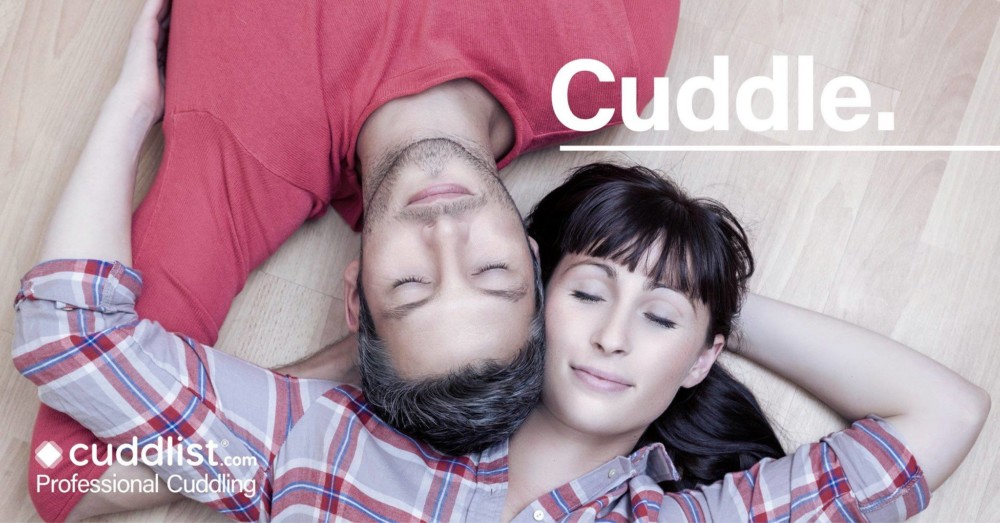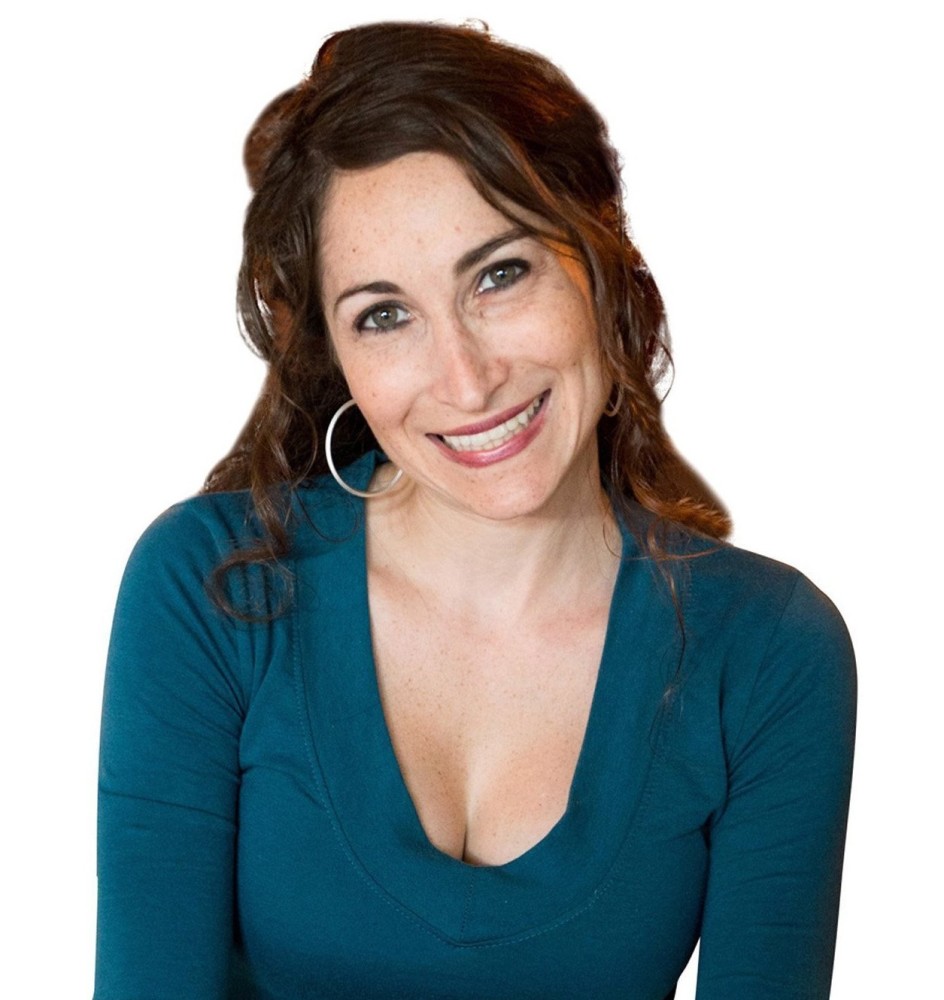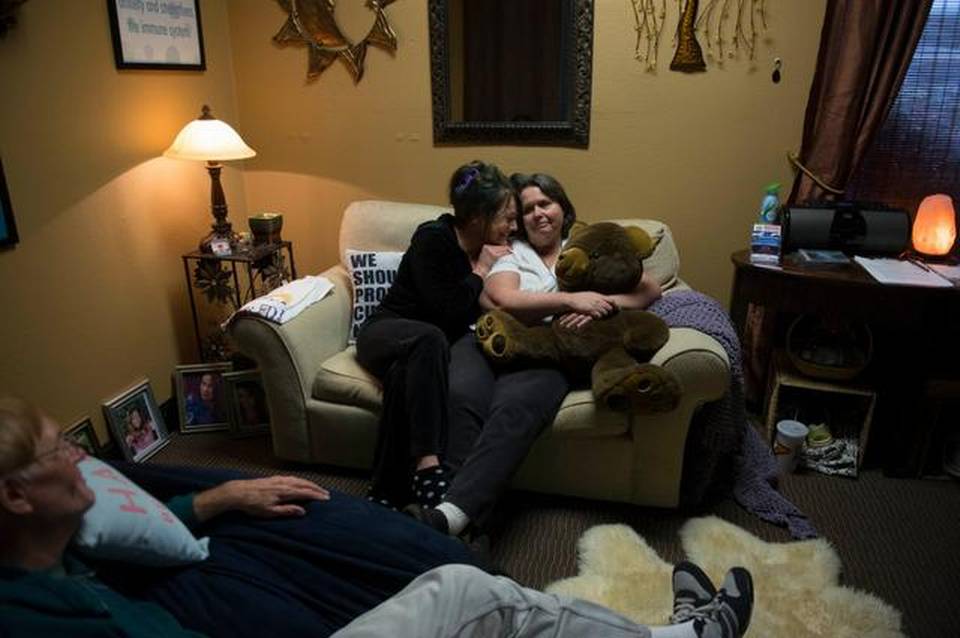By Alfred Lubrano
The Philadelphia Inquirer
WWR Article Summary (tl;dr) Is professional cuddling the ultimate 21st-century response to loneliness? Is it a real form of therapy to reduce stress and promote well being? Alfred Lubrano takes a look.
The Philadelphia Inquirer
Ivy Dremon opens the door to her South Philadelphia apartment and greets the stranger she will be cuddling for the next hour.
“I’m super-excited,” Dremon, 24, a professional “cuddlist,” tells her visitor, Rashida, a 42-year-old divorced mother of two who has driven there from Glenside. Though she allows photographs, Rashida asks that her last name not be used.
“My intention,” she says, contemplating how she’d like Dremon to put her hands on her, “is relaxation.”
What’s happening is neither sex nor massage.
Dremon is one of five people in Philadelphia who provide one-on-one cuddling services for $80 an hour. They’re part of Cuddlist, a four-year-old company offering a “therapeutic approach to touch,” according to its website. There are smaller businesses that dispatch cuddlers into the world, but Cuddlist describes itself as America’s largest such enterprise.
It has 200 practitioners across the nation who allow people into their homes, or go where their clients designate, to hug, spoon, snuggle, and pet in a near-infinite menu of platonic touches, according to cofounder Adam Lippin, of Montclair, New Jersey.
“A lot of people have touch deprivation, skin hunger,” says Lippin, 56, an entrepreneur who was a yoga teacher as well as the founder of Atomic Wings, a chain of chicken eateries in the northeastern United States.
“Cuddling is a super-charged way to connect. And it releases oxytocin, the love hormone,” which some scientists say is secreted into the bloodstream during hugging.
One-on-one cuddling derived from cuddle parties, which started around 15 years ago with groups of strangers engaged in nonsexual touch, Lippin says.
Two-person cuddling is seen as more intimate.
Is professional cuddling the ultimate 21st-century response to loneliness — where one orders up an embrace like a quesadilla from Uber Eats? Is it the inevitable pendulum-swing away from too much online life, which compels folks to touch keyboards instead of one another?
Or — as Dremon herself once wondered — is it just plain “creepy”?
Typically, sessions last 90 minutes, Lippin says. He adds that clients include a “broad swath of humanity,” including new-age “spiritual seekers”; those with post-traumatic stress disorder who need help connecting to others; anxious college students; and people with Asperger’s syndrome, with significant difficulties interacting socially.
“It sounds crazy when I tell people I’m gonna hug on a stranger for an hour,” says Jennifer Locke, 50, of Brewerytown, a divorced mother of three and one of Dremon’s Philly cuddlist colleagues. “But it’s about caring and healing. And the sense of well-being can be euphoric.”
Dremon serves Rashida green tea.
Then she recites a code of conduct governing the interaction. Both client and cuddlist agree to not pursue or encourage sexual arousal, but to “practice consent and attention to personal boundaries.”
“I ask that you don’t touch my feet,” Dremon says, “or put too much pressure on my jaw.” Rashida nods.
The two sit on the couch. “Would you like my arm around your shoulder?” Dremon asks.
“Yes,” says Rashida, a family therapist. “I give a lot at work. It’s nice to feel I don’t have to do anything here.”
They sit back and close their eyes as Rashida places her head on Dremon’s shoulder.
In a study from the 1960s, a psychologist observed friends talking in cafes around the world, according to an article by University of California, Berkeley, psychologist Dacher Keltner.
In England, friends touched zero times in an hour. In the U.S., twice. In Puerto Rico, 180 times. Keltner’s conclusion: “Some Western cultures are touch-deprived.”
Untouched babies in orphanages manifest behavioral problems, Keltner writes. When librarians pat the hands of students checking out books, the kids are more likely to return. Professional basketball teams whose players touch one another win more games, Keltner writes, citing a 2010 study in the scientific journal Emotion.
“Cuddling can reduce stress and promote well-being,” says Girija Kaimal, an assistant professor at Drexel University’s College of Nursing and Health Professions and an expert in human development. “Forty percent of us feel lonely. This conquers that. I never heard of professional cuddling, but it makes sense.”
While it’s true “that touch can be positive,” says Rudy Nydegger, chief of the division of psychology at Ellis Hospital in Schenectady, N.Y., “that comes with a large however.”
If you have to pay someone to hug you, he says, “then physical contact is the least of your problems. It means you need help developing relationships.”
Beyond that, Nydegger says, while some professional cuddlers may be legitimate, it’s not a licensed specialty, “which means anybody who wants to hang up a phony shingle can provide services, and there’s no way to know if a person is on the shady side. It can be risky.”
Lippin of Cuddlist insists his enterprise is safe, both for client and practitioner. To engage a cuddlist, a person answers a series of online questions about what, ideally, might be gained from the experience. Then the cuddlist contacts the client to “get the vibe,” as Locke puts it, weeding out oddballs and anyone looking for sex.
Once, Locke said, a client started getting sexual, but she shut down the session without incident. She and other local cuddlists say they haven’t had dangerous encounters.
Cuddlists take a three-week online course about mutual consent and boundaries. They keep their session fees, and pay the company about $40 a month to stay listed as practitioners on its website.
Not
everyone understands the practice. When Malcolm Grant, 39, a North Philadelphia cuddlist, first told his mother, she said, “That sounds like prostitution.”
Like Dremon and Locke, Grant, who also works as a case manager in a mental health program, deals with old hardships that haunt. He has bipolar disorder, and was traumatized as a child witnessing violence. Dremon is a domestic-violence survivor. Locke has multiple sclerosis. Dremon and Grant allow that there may be a correlation between being hurt and wanting to heal others through safe touch.
It’s not surprising that people are skeptical of professional cuddling, says Bob, 71, a client of Locke’s from South Jersey. He asks that his real name be withheld in order to speak openly about cuddling.
“Jen is a beacon of light in an unforgiving, dark world,” Bob says. “She’s friendly, she won’t blackmail me, and she’s giving me something I’m starving for.
“I’ve had tremendous trauma, and Jen offers spiritual food. Cuddling is like a home-cooked meal. After you feed, you’re content, satisfied with yourself and humanity, and connected to another.
“It’s about soulful nurturing.”
Dremon commands her Echo to play jazz.
“Ever heard of the toboggan?” she asks Rashida.
Dremon sits on the floor and has Rashida sit in front, leaning back against Dremon’s torso. She cradles Rashida in her arms.
“It feels really good,” Rashida says.
At the end of the session, Dremon advises her: “Right now, you’re probably feeling high. It’s oxytocin. You could also be going through strong emotions.”
“It’s like the feeling after leaving a spa,” Rashida says. “This was a great comfort.”
The two raise their teacups and clink them in a toast.
Rashida smiles. “This was lovely.”
___
Distributed by Tribune Content Agency, LLC.
















































































































































































































































































































































































